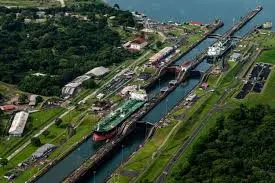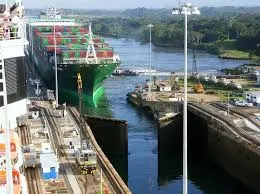Trump’s Panama Ports deal, touted as a major success, will miss its April 2 deadline, raising questions about future trade and infrastructure plans.
Former President Donald Trump’s much-anticipated Panama Ports Deal, which was initially expected to reshape global trade infrastructure, is set to miss its crucial April 2 deadline. This development raises several questions about the deal’s future and the broader implications for international trade and the United States’ position in global logistics.
The Panama Ports Deal: What Was Promised?
Trump’s Panama Ports deal, first unveiled in 2020, was touted as a game-changer for both U.S. and global trade. The deal aimed to enhance U.S. access to key ports in Panama, including the expansion and modernization of existing infrastructure. The goal was to facilitate smoother trade routes between the U.S. and Latin America, particularly in sectors like agriculture, manufacturing, and oil.
The promise of increased efficiency and faster transport times was particularly appealing for businesses in the U.S. seeking to tap into the growing Latin American markets. Additionally, Trump’s administration framed the deal as a way to strengthen the economic ties between the U.S. and Panama, which could provide long-term benefits for both nations.

What’s Happening Now?
As April 2 approaches, it is now clear that the Panama Ports Deal will not meet its original deadline. This delay has raised concerns among stakeholders, including U.S. businesses and government officials, who were relying on the deal’s success to improve trade operations in the region.
While the specifics of the delay are still unclear, sources close to the deal suggest that complications with the financing, approval processes, and logistical challenges have contributed to the hold-up. Additionally, the global supply chain disruptions caused by the COVID-19 pandemic may have further slowed down progress.
The Implications for U.S. Trade
The delay in the Panama Ports Deal could have ripple effects on U.S. trade and its ability to stay competitive in the fast-evolving global logistics market. The Panama Canal, which plays a critical role in global shipping, connects the Atlantic and Pacific Oceans and serves as a vital artery for trade between North and South America.
For U.S. businesses, access to modernized and efficient ports in Panama was seen as a way to reduce shipping times and costs. Missing the deadline means that companies may face further delays in moving goods through this key trade corridor. These delays could result in increased shipping costs and, in some cases, shortages of goods that rely on quick transport.
What’s at Stake for Panama?
For Panama, the Ports Deal was seen as an opportunity to bolster its role as a global trade hub. The country already benefits from the Panama Canal, one of the world’s most important shipping routes, and the ports deal was expected to enhance its infrastructure and global competitiveness.
By modernizing and expanding its ports, Panama could attract more international business and investment. However, with the deadline now slipping, the country may face a loss of confidence from international investors who were eager to see the deal come to fruition.
What Does This Mean for Trump’s Legacy?
The delay of the Panama Ports Deal could have an impact on Trump’s legacy in the world of trade and international relations. Throughout his presidency, Trump placed a strong emphasis on securing trade deals that would benefit the U.S., often focusing on renegotiating or reshaping existing agreements.
With the Panama Ports deal falling short of its deadline, critics of Trump may argue that his administration struggled to deliver on some of its key promises regarding international trade. On the other hand, supporters may point to the fact that the deal has not been entirely scrapped and could still move forward, albeit with some setbacks.

Looking Ahead: What Happens Next?
As the April 2 deadline comes and goes, it is uncertain what will happen to the Panama Ports Deal. While the deal is far from being abandoned, its future hinges on the resolution of several key issues. These include securing the necessary funding, overcoming regulatory hurdles, and finding a way to expedite the timeline.
For businesses and governments invested in the success of this deal, the coming months will be critical. If the deal can be revived and the necessary adjustments made, it could still have a lasting impact on U.S.-Panama trade relations and the global shipping industry.
Conclusion
In conclusion, while the Panama Ports Deal is set to miss its original April 2 deadline, it is far from the end of the story. The deal’s delay highlights the challenges of international trade agreements and infrastructure projects, especially in a world still reeling from the effects of the COVID-19 pandemic. For now, all eyes will be on how the parties involved handle the situation in the coming months and whether the deal can be salvaged to meet its original goals.
This development raises important questions about the future of global trade, infrastructure projects, and the lasting effects of Trump’s foreign policies. The next steps for the Panama Ports Deal will likely set the stage for future trade agreements, not just in Panama, but around the world.





